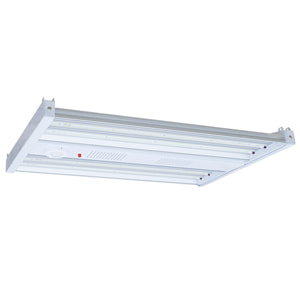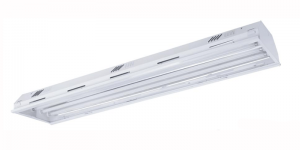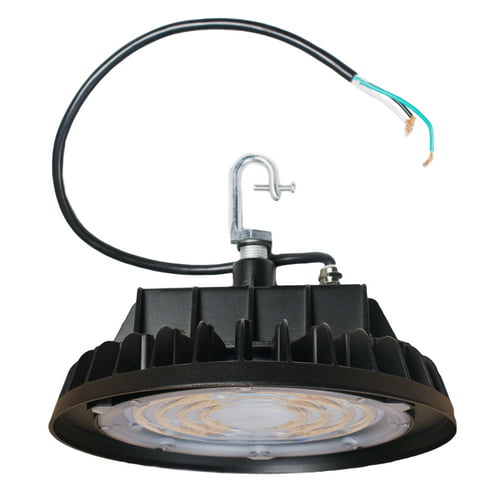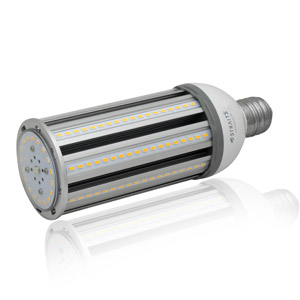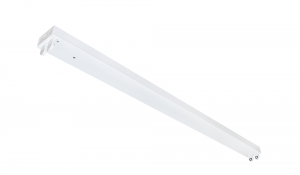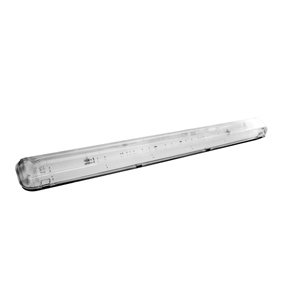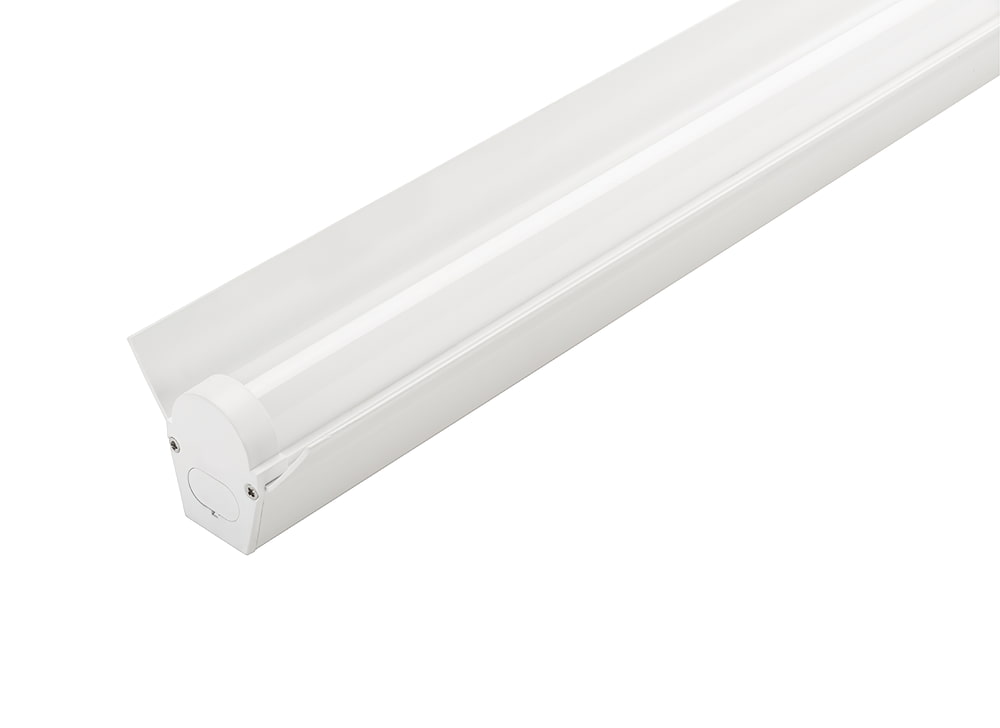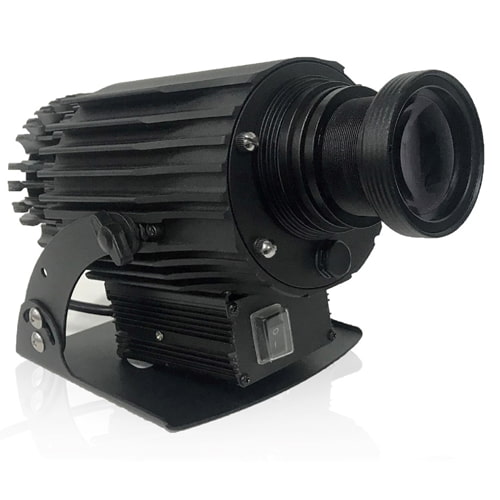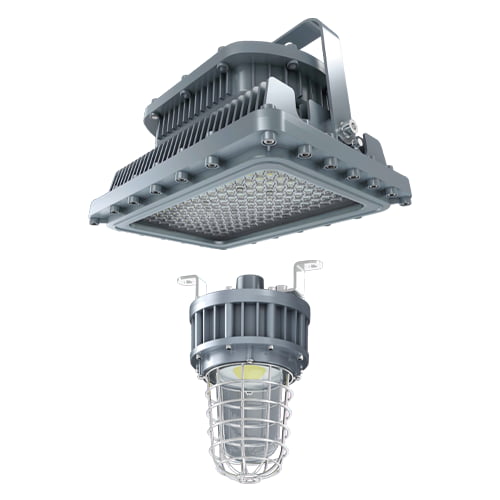Industrial Lighting
Industrial LED Lighting
Warehouses and Industrial facilities across the country rely on our top quality commercial LED lights for their facilities. Browse our selection of industrial lighting fixtures and bulbs.
Industrial Lighting Examples

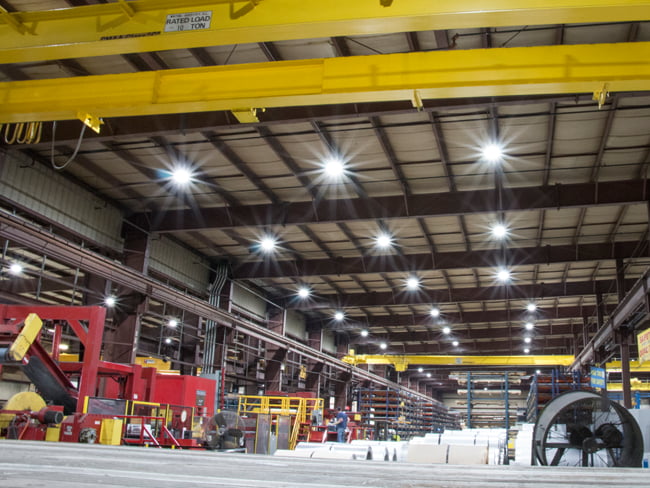



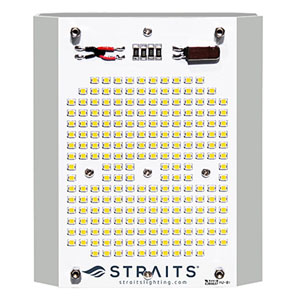
Industrial Lighting
LED technology has come to dominate just about every conceivable lighting application today, especially in the industrial lighting sector. Industrial lighting applications often involve vast amounts of lighting fixtures and bulbs in order to provide proper lighting coverage for these large areas. There are many benefits to using LED lighting for these applications, which is one of the reasons why when given the opportunity almost all industrial facilities utilize this technology. In fact, finding a traditional type of lighting fixture in an industrial building is quite rare now-a-days.
Whether these lights are installed as retrofits to existing lighting fixtures or replacing the fixture entirely, there are several key reasons as to why industrial managers and faculty owners upgrade to LED technology instead of using traditional lighting options. The primary benefits include improved energy efficiency, the elimination of required maintenance, a dramatically longer lifespan and noticeably improved lighting accuracy.
Warehouse Lighting
Warehouses require specially designed lighting fixtures that are able to provide necessary illumination over a wide area. Additionally, it’s important that these lighting fixtures can withstand prolonged use and harsh environments while requiring little to no maintenance.
Having an ideal lighting solution for warehouses will improve visibility within the facility while maximizing energy-efficiency. Not only does this save energy costs for a business, but also helps to reduce workplace accidents and improve productivity. Many reputable safety organizations recognize the importance of having proper illumination in industrial facilities.For example, the Teamsters provide information on the importance of lighting in warehouses on their website:
“Workers at a warehouse need to spot oncoming vehicles, pedestrians, slippery floors and other hazards in time to prevent injuries and accidents. Areas of the warehouse that require lighting include the loading dock, shipping and receiving areas, open storage areas, and rack storage…”
- Teamsters Safety & Health Facts, 2004, Lighting (Illumination) in Warehouses.
Our company offers top quality steel constructed UFO high bays for illuminating a wide area with a high ceiling along with low-bay lighting fixtures for lower areas. We use LEDs as our source of lighting to give our customers a high quality environmentally friendly lighting option that increases their bottom line in the long run.
Industrial Lighting Design
The concept of hanging a lighting fixture is relatively straightforward. However, in order to maximize the effectiveness and efficiency of a lighting system, it must be specifically designed for the application. When designing a lighting system, there are multiple factors that come into play, beginning with the foot candle requirements for the area. Once this key factor has been determined, all the other factors can be taken into consideration. These factors include the ceiling heights and square footage of an area as well as the configuration of the floor space of the facility itself.
After these factors are taken into consideration, the fixtures can be selected that are best tailored to the application. The fixtures chosen should ideally provide a solid balance of lumen output and energy efficiency, which will result in the maximization of illumination for an area with the minimal amount of operating costs. Depending on what makes the most sense for the particular application, this can result in a lower number of higher powered fixtures, or a lighter number of lower powered fixtures.
Determining the type, quantity and lumen output of fixtures for an industrial lighting system design is challenging, as no two lighting designs are the same and there is no one size fits all lighting fixture for every application. Behind every properly designed lighting configuration is a significant of science and mathematics, which is outside the scope of most building managers and even the average lighting contractor. Because of this, we offer in house photometric design services, with experienced photometric planners who will work with you to develop an ideal lighting setup for your facility’s particular needs. This ensures that industrial lighting customers and building users will be able to receive the maximum return on their investment in our LED lighting products.
In order to showcase our industrial lighting design capabilities, below is an example of a photometric plan our photometric planners created for an industrial facility utilizing UFO high bay lights designed to provide optimal illumination for their building:
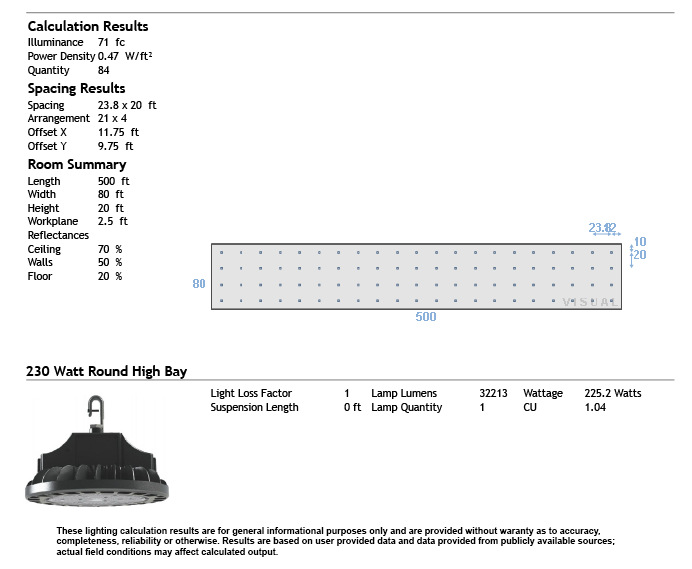
Common Industrial Applications
Airports - Requiring both a significant lighting spread as well as intense lumen outputs, airports have uniquely demanding lighting requirements. They also have a wide range of different building types, structures and areas that need to be illuminated, making the fixture selection equally as varied. Flood lights, wall packs and street lights are the most popular for outdoor lighting, with UFO high bay and linear low bay lighting being the preferred choice for aircraft hangars and airport maintenance facilities.
Airplane Hangars - Due to the extreme precision required when maintaining and storing aircraft inside hangars, the lighting fixtures chosen must produce exceptional lumen output in order to provide enough illumination to ensure safe, accurate and quality work. UFO high bays are the number one choice for this application, as they are some of the highest powered lighting fixtures available and provide exceptional lumen output from the high ceilings normally encountered in airplane hangars.
Manufacturing Facilities - One of the most varied types of industrial applications, manufacturing facilities have significant lighting requirements in order to ensure worker safety as well as production efficiency. The types of lighting fixtures used vary considerably depending on the specific area, ranging from high bay fixtures to low bay lights and strip lighting.
Storage Facilities - Generally speaking, most of these facilities are outdoors, with the only interior areas being small storage units with minimal lighting requirements. As such, the majority of the lighting fixtures used for storage facilities are designed to be rugged and weatherproof for outdoor use, such as flood lights, canopy lights and wall packs. Interior lighting is usually satisfied by the use of linear strip lights and flat panels depending on how the facility is configured.
Frequently Asked Questions
Q. What is industrial lighting?
Industrial lighting is a fairly broad term usually used to describe lighting fixtures for industrial units such as warehouses, factories, machine shops, storage buildings, etc. This category differs slightly from commercial lighting which involves lighting solutions for applications such as office buildings or retail stores. With that said, there’s often overlap between commercial and industrial. As a result, the two are often used interchangeably.
When you consider the term “industrial grade” this usually means well constructed and highly durable for maximum use. This term applies to lighting as well since these lights are manufactured to withstand prolonged use and harsh industrial environments.
In short, industrial lighting is a category of lighting that’s specifically designed to meet the needs and requirements of industrial environments.
Q. Where are industrial lights used?
Industrial lights are used in many different industries and have many different uses. Basically, these lights are necessary anywhere that has a ceiling higher than 20 feet, requires exposure to harsh environments, or requires the ability to withstand heavy prolonged use. Common uses for industrial lights include:
- Warehouses
- Factories
- Basketball arenas
- Airports
- Ice rinks
- Storage facilities
- Power plants
- Conference halls
- Machine shops
- Event centers
- Large gyms
Q. What type of lights are used in warehouses?
Warehouses require specialized lighting products due to the large area required for lighting and necessary durability against prolonged use and harsh conditions. These lighting fixtures need to be industrial quality and certified for safety against environmental factors such as dust, heat, etc. Common examples of warehouse lighting fixtures include:
- LED High Bay Lights
- UFO High Bays
- Linear High Bays
- Low Bay Lighting Fixtures
Q. What are high bays?
As suggested by the name, high bay fixtures are used to provide lighting within areas that have high ceilings. Ceilings that are considered “high” by industry standards generally range from 20-40 feet. Naturally, areas that have a high ceiling require more illumination; thus, require a more powerful lighting source. High bay lights are specifically designed to illuminate these areas.
Q. What are low bays?
Unlike high bays, low bay lighting fixtures are used to provide lighting in areas with low ceilings. Ceilings that are considered “low” by industry standards are generally under 20 feet. Since these areas don’t require as powerful of a lighting source, low bays are specifically designed to provide necessary illumination without unnecessary consumption of energy.
Q. Why use Industrial LED lighting?
There are many benefits to using LEDs for industrial applications. One of the main benefits is that LEDs are more energy efficient as opposed to traditional lighting methods such as fluorescents. This is key since industrial environments often require lights to undergo heavy prolonged use. In other words, using LEDs will save substantial energy costs in the long term. Other benefits of LED lighting include:
- Little to no maintenance costs
- Environmentally friendly
- Less CO2 emissions
- Safer working environments
- Easy to replace
- Higher quality illumination


